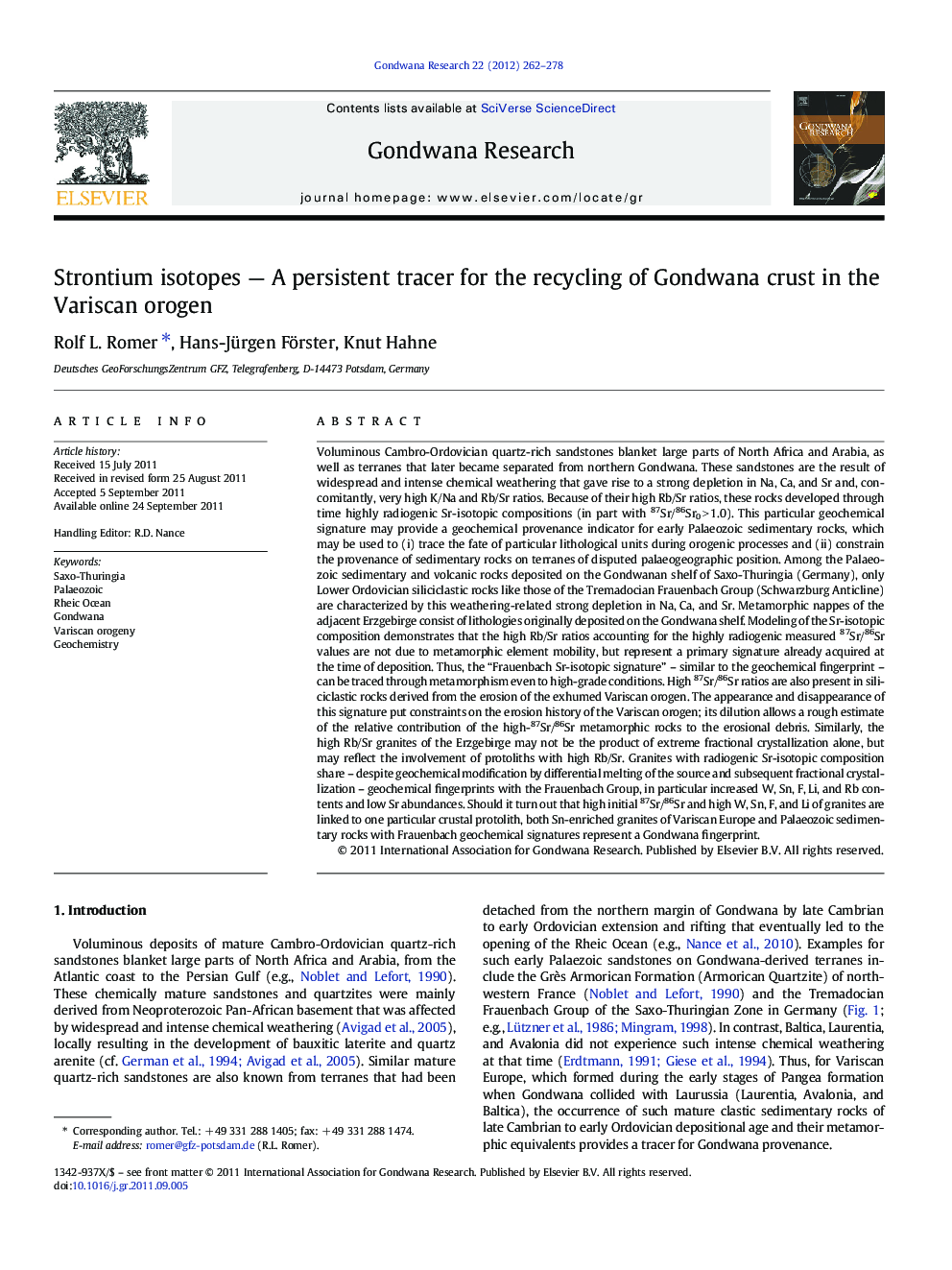| کد مقاله | کد نشریه | سال انتشار | مقاله انگلیسی | نسخه تمام متن |
|---|---|---|---|---|
| 4726761 | 1356345 | 2012 | 17 صفحه PDF | دانلود رایگان |

Voluminous Cambro-Ordovician quartz-rich sandstones blanket large parts of North Africa and Arabia, as well as terranes that later became separated from northern Gondwana. These sandstones are the result of widespread and intense chemical weathering that gave rise to a strong depletion in Na, Ca, and Sr and, concomitantly, very high K/Na and Rb/Sr ratios. Because of their high Rb/Sr ratios, these rocks developed through time highly radiogenic Sr-isotopic compositions (in part with 87Sr/86Sr0 > 1.0). This particular geochemical signature may provide a geochemical provenance indicator for early Palaeozoic sedimentary rocks, which may be used to (i) trace the fate of particular lithological units during orogenic processes and (ii) constrain the provenance of sedimentary rocks on terranes of disputed palaeogeographic position. Among the Palaeozoic sedimentary and volcanic rocks deposited on the Gondwanan shelf of Saxo-Thuringia (Germany), only Lower Ordovician siliciclastic rocks like those of the Tremadocian Frauenbach Group (Schwarzburg Anticline) are characterized by this weathering-related strong depletion in Na, Ca, and Sr. Metamorphic nappes of the adjacent Erzgebirge consist of lithologies originally deposited on the Gondwana shelf. Modeling of the Sr-isotopic composition demonstrates that the high Rb/Sr ratios accounting for the highly radiogenic measured 87Sr/86Sr values are not due to metamorphic element mobility, but represent a primary signature already acquired at the time of deposition. Thus, the “Frauenbach Sr-isotopic signature” – similar to the geochemical fingerprint – can be traced through metamorphism even to high-grade conditions. High 87Sr/86Sr ratios are also present in siliciclastic rocks derived from the erosion of the exhumed Variscan orogen. The appearance and disappearance of this signature put constraints on the erosion history of the Variscan orogen; its dilution allows a rough estimate of the relative contribution of the high-87Sr/86Sr metamorphic rocks to the erosional debris. Similarly, the high Rb/Sr granites of the Erzgebirge may not be the product of extreme fractional crystallization alone, but may reflect the involvement of protoliths with high Rb/Sr. Granites with radiogenic Sr-isotopic composition share – despite geochemical modification by differential melting of the source and subsequent fractional crystallization – geochemical fingerprints with the Frauenbach Group, in particular increased W, Sn, F, Li, and Rb contents and low Sr abundances. Should it turn out that high initial 87Sr/86Sr and high W, Sn, F, and Li of granites are linked to one particular crustal protolith, both Sn-enriched granites of Variscan Europe and Palaeozoic sedimentary rocks with Frauenbach geochemical signatures represent a Gondwana fingerprint.
Figure optionsDownload as PowerPoint slideHighlights
► Weathered Early Palaeozoic rocks of northern Gondwana have very high 87Sr/86Sr.
► Anomalously radiogenic Sr is a provenance indicator that persists metamorphism.
► High 87Sr/86Sr re-appear in the erosional debris of the Variscan orogen.
Journal: Gondwana Research - Volume 22, Issue 1, July 2012, Pages 262–278